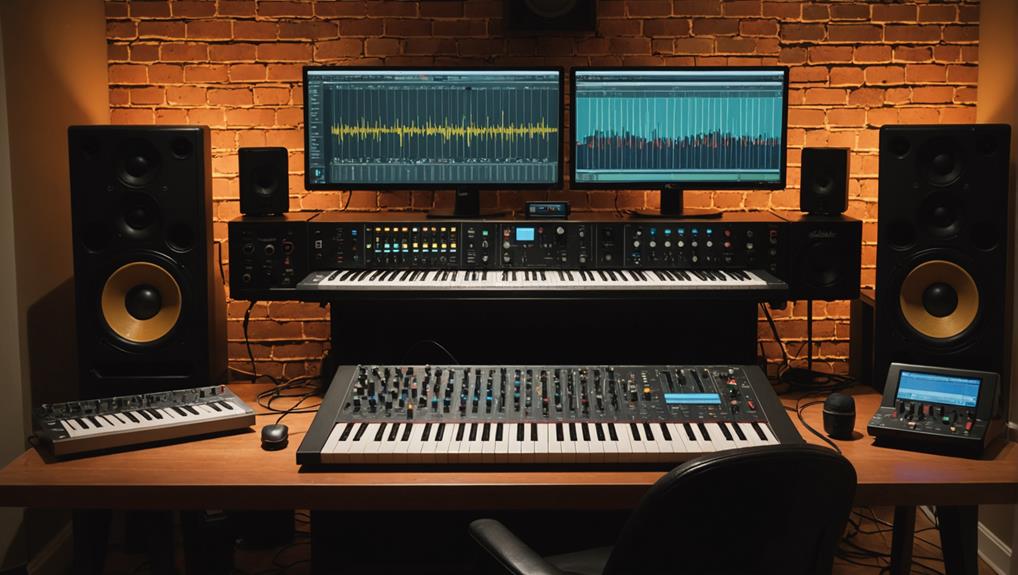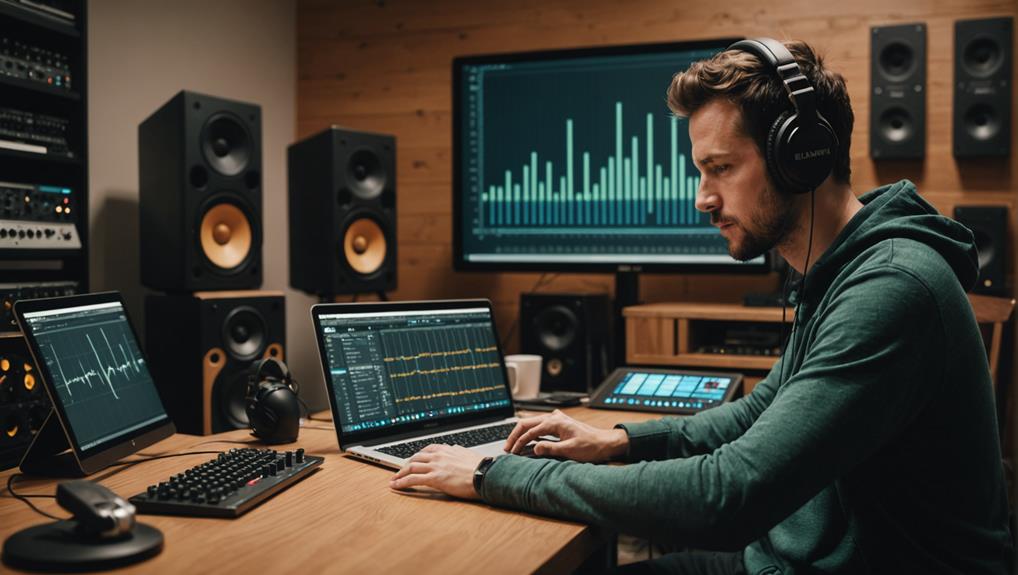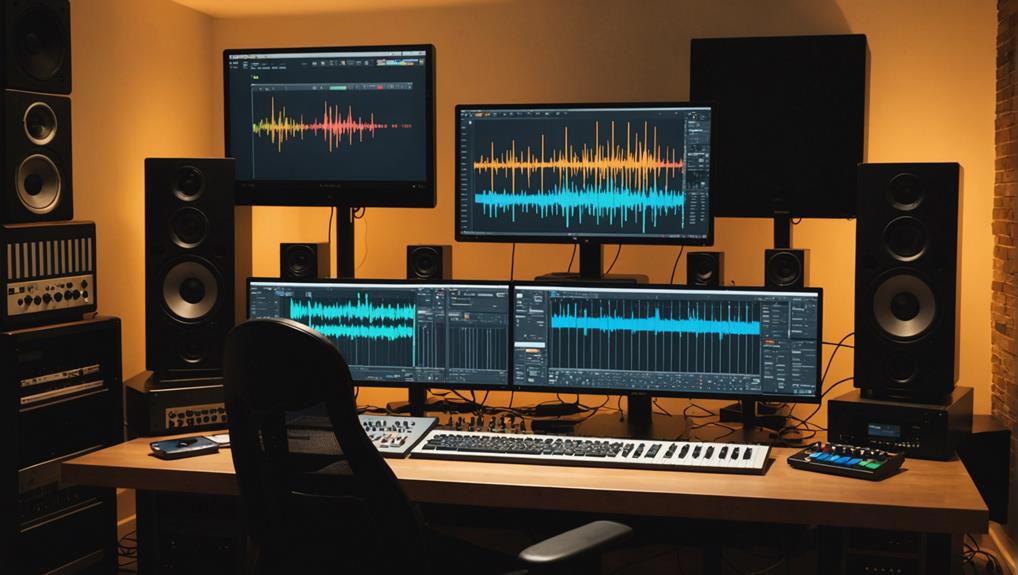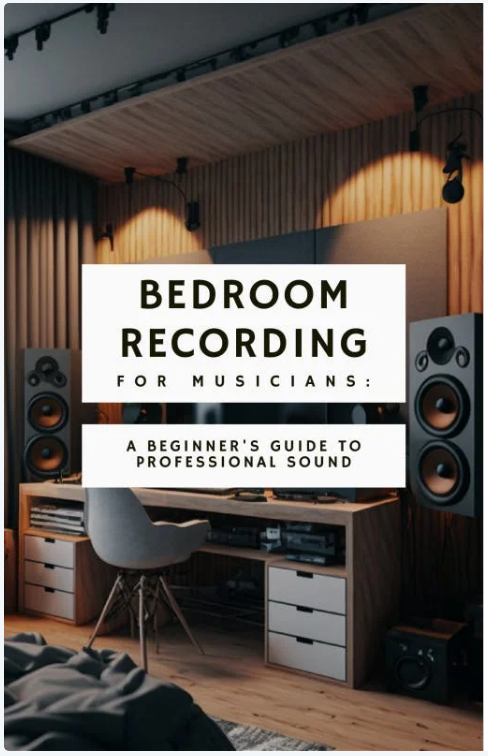To get a polished mix in your home studio, start by organizing your session with clear track labels and color coding. Balance levels and pan tracks wisely to create space, keeping the kick and bass centered. Use EQ to clean up unwanted frequencies and apply compression to control dynamics. Implement automation for volume and effects changes, adding depth to your mix. Finally, always test your mixes on different systems and reference professional tracks to guarantee balance. By mastering these techniques, you’ll craft mixes that stand out, and there’s more to explore that can further enhance your mixing skills!
Key Takeaways
- Organize your session by labeling tracks clearly and using color coding to differentiate instruments and vocals for easy navigation.
- Balance levels and panning by adjusting volumes and strategically placing elements in the stereo field to create space and clarity.
- Utilize EQ and compression to eliminate unwanted frequencies, control dynamic range, and enhance the overall sound quality of each track.
- Implement automation for volume, panning, and effects to create dynamic changes and maintain clarity throughout the mix.
Organize Your Session Effectively
To make your mixing process smoother, start by organizing your session effectively in your DAW. Label all your tracks clearly and consistently, so you can easily identify each instrument or vocal. This step streamlines your workflow tremendously.
Use color coding for different track types—like drums, guitars, and vocals—to visually distinguish between elements and quickly locate what you need.
Next, group similar tracks into folders or buses. For instance, keep all your drum tracks together; this way, you can apply processing effects collectively, making it easier to manage levels.
A logical arrangement is key, too. Position your tracks from left to right, starting with drums and bass, followed by harmonic instruments, and finishing with vocals and effects.
Lastly, don’t forget to backup your session regularly. Use a consistent file naming convention, including the date and version, to prevent data loss and guarantee easy session retrieval.
Balance Levels and Panning
After organizing your session, the next step is balancing levels and panning to create a cohesive and engaging mix. Start by adjusting the volume of each track to guarantee no individual element overwhelms the others. Your goal is to achieve a balanced mix where every instrument and vocal is clearly heard, enhancing the overall audio production quality.
Next, use panning strategically to create space in the stereo field. For instance, panning instruments like guitars and keyboards slightly left or right can improve clarity and separation, giving your mix more depth. Keep the kick drum and bass centered, as they provide essential low-end energy and anchor the overall sound.
Don’t forget to check your mix in mono regularly. This helps confirm that your balance levels and panning remain effective across various playback systems, as some listeners may only experience your mix in mono.
When making adjustments, do so gradually. Small increments can help maintain the cohesion of your mix, preventing drastic changes that could disrupt the clean audio you’re aiming for.
With these techniques, you’ll be on your way to achieving a professional mix in your home studio.
Utilize EQ and Compression

Utilizing EQ and compression effectively can transform your mix, enhancing clarity and control over your sound. In your home recording studio, start with EQ to identify and cut unwanted frequencies. Use high-pass filters to eliminate low-end rumble from non-bass instruments, ensuring an accurate sound and preventing frequency masking. This step creates a cleaner mix that’s essential for professional recording.
Next, apply compression to manage the dynamic range. Aim for a ratio between 3:1 and 5:1 for vocals and instruments to maintain musicality while achieving consistent levels. Experiment with the attack and release settings on your studio gear; faster attack times help control transients, while slower release times can add sustain and fullness.
Here’s a quick reference table to guide your EQ and compression process:
| Technique | Purpose |
|---|---|
| High-Pass Filter | Eliminate low-end rumble |
| EQ Cutting | Remove unwanted frequencies |
| Compression Ratio | Control dynamic range |
| Attack/Release Settings | Shape sound dynamics and sustain |
Implementing these techniques will elevate your mixing and mastering process, ensuring you achieve a polished final product.
Implement Automation Techniques
Automation techniques enhance your mix by allowing you to control volume, panning, and effects with precision throughout the track. As a mix engineer, you’ll find that using automation can greatly improve the dynamic range and overall interest in your mix. By automating gradual changes in levels, you can build tension and release, making shifts smoother and more engaging.
Most DAWs come equipped with automation lanes that are easy to access and edit. You can draw curves or use envelopes to create intricate adjustments. When working on vocal tracks, implementing automation guarantees clarity and presence, helping maintain balance with other instruments, especially during dynamic sections.
Don’t forget to regularly automate effects like reverb and delay. This practice creates a sense of depth and space, assuring that these elements complement rather than overwhelm the primary components of your mix.
Test and Reference Your Mixes

Testing and referencing your mixes is essential for guaranteeing they sound great on any playback system. To do this effectively, listen to your mix on various systems, like studio monitors, headphones, and even car speakers. This approach helps you determine if your mix translates well across different environments. Use reference tracks from professional studios to gauge your mix’s tonal balance and overall quality.
While mixing a song, regularly adjust your listening levels to combat ear fatigue. Switching between loud and quiet volumes allows you to identify issues that may be hidden at a constant level.
It’s also important to test your mix in different rooms to understand how room sound and acoustic treatment affect your music.
Gather feedback from trusted listeners who can offer objective insights into your mix. They can help pinpoint strengths and reveal areas for improvement.
Ultimately, by carefully testing and referencing your mixes, you’ll guarantee that your frequency spectrum is balanced and polished, creating a professional sound that resonates with your audience regardless of where they listen.


